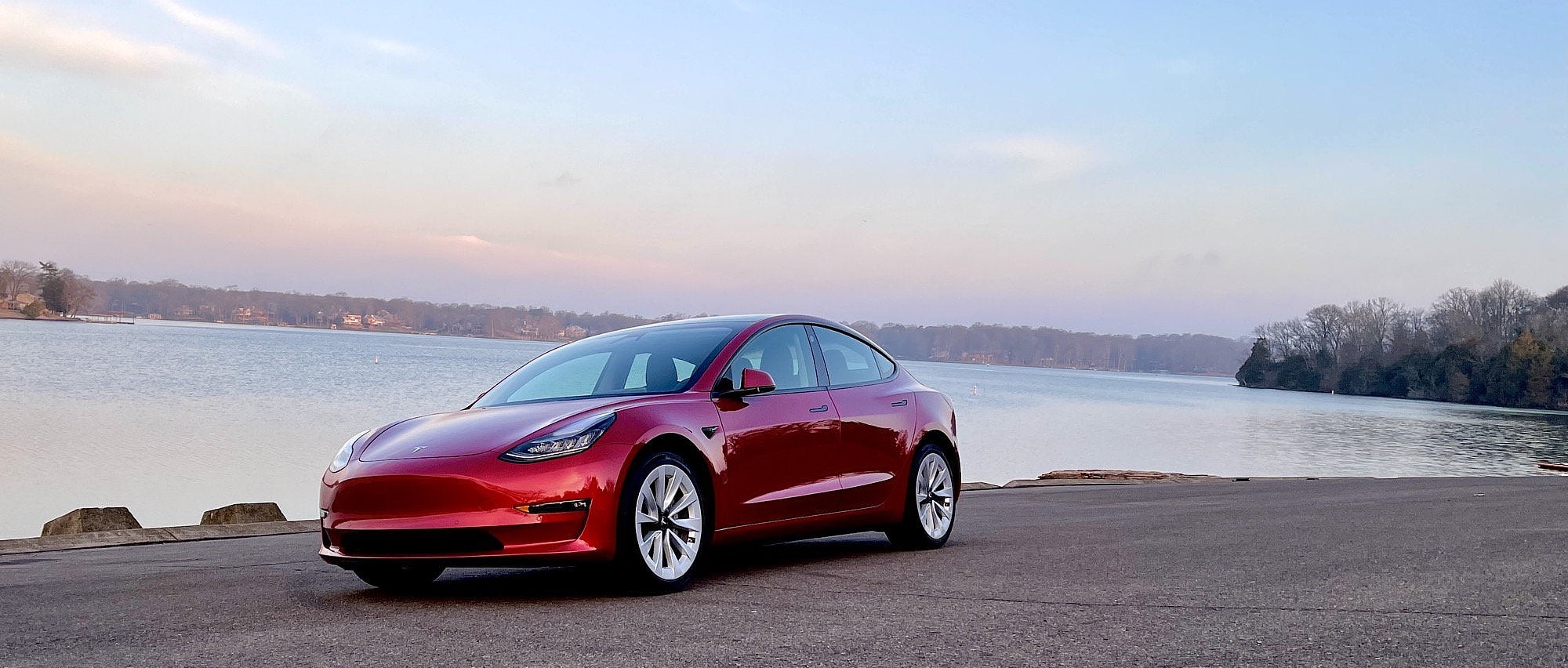
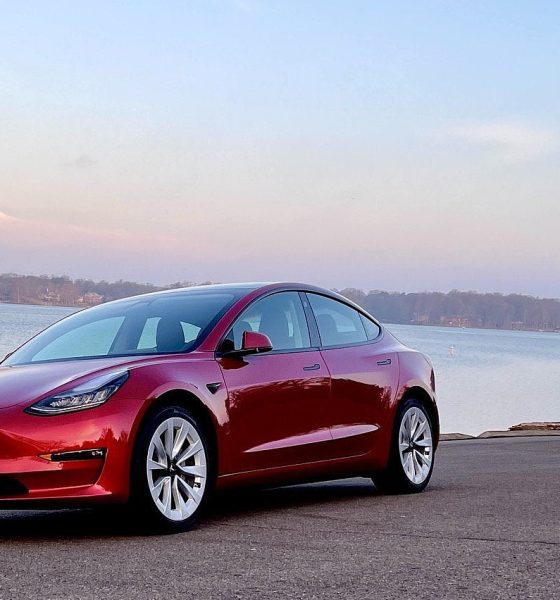
News
Tesla won’t be ‘king of the hill’ forever, but it will be for the foreseeable future
Tesla is the “king of the hill” in the electric vehicle sector, former company board member Steve Westly said on CNBC’s Power Lunch yesterday. However, Westly, who joined Tesla in 2007 and left several years later, doesn’t believe the automaker will remain at the helm of the EV industry forever. Driven by growing competition from both low-end and high-end automakers, Westly says Tesla’s time at the top is dependent on its competition, because other markets, like Europe, have pushed Tesla to the wayside in favor of other companies.
While it is safe to say Tesla won’t be at the top of the EV industry “forever,” it is certainly also safe to say that they will lead the sector for a considerable amount of time. With legacy automakers dragging their feet and releasing electric vehicle models for the first time in 2021 and beyond, they sit years behind Tesla, whose only focus is building sustainable, high-performance battery electric vehicles. Meanwhile, companies like Ford and GM continue to drag their feet in the mission of developing a lineup of EVs, and European car companies face issues related to production, transitioning away from ICE, and software. Volkswagen is the automaker that comes to mind with the latter issue.
Westly cited GM going all-electric by 2035, Volkswagen indicating that they’re “all in” on EVs, and Volvo, who announced an all-EV lineup by 2030, as indicators that Tesla won’t be the king forever.
But what have any of these car companies done to prove that Tesla won’t be on the top in 2030? 2035? 2050, even?
It is true that Tesla has fallen a tad in terms of European EV sales figures, but it’s not for no reason. Tesla has not yet started the operation of Giga Berlin, its introductory European production facility that could bring at least 500,000 cars to the market every year. Refusing to export Model Y variants from the United States or China, Europe is stuck with the Model S, Model X, and the Model 3, but only for a few months as Giga Berlin is set to begin production during Summer 2021.
While it is true that Tesla is facing competition from both economical EV brands and luxury manufacturers, this fact alone is a testament to the wide range of EVs that the company is able to offer. Not only is Tesla manufacturing the Model 3 and Model Y, which are more than affordable to many families across the world, but it is also making a point to continue the production and sale of its two, more luxurious models: the Model S and Model X. Not necessarily a huge contributor to the company’s yearly production and delivery targets, both of the vehicles were put off as “sentimental” projects by Elon Musk several years ago. However, a recent refresh to both of these cars seems to indicate that the flagship Tesla vehicles are not going anywhere anytime soon.
In the United States, Tesla reigns supreme with the Model 3 and Model Y. In China, the only car to dethrone the Model 3 is an inexpensive, low-range GM project known as the Wuling HongGuang Mini EV that boasts between 80 and 110 miles of range per charge. In Europe, Tesla was once the “King of the Hill.” But, the lack of a production facility ultimately dethroned the company’s title as the highest-selling EV brand on the continent most thirsty for electric powertrains. When Giga Berlin begins production, this will likely change, and Tesla will reopen its potential to compete with the brands that have ruled the European EV sector for the last few years.
Tesla has continued to grow and expand its footprint through a few challenging years, which indicates that, despite the proven adversity that will likely always exist, the company is robust enough to deflect most of the challenges that come its way. Despite production bottlenecks in 2017 with the Model 3, continued issues in 2018, and the COVID-19 pandemic in 2020, Tesla has sustained a growth pattern that most automotive startups can only dream about. The point that Westly made about Tesla not being “King of the Hill” forever is true, but the foreseeable future belongs to Tesla. Until a company comes along and proves otherwise, Elon Musk’s EV company will remain at the helm, as long as it continues to develop a series of mind-blowing EV products that offer range, performance, and aesthetics that are unmatched by any car company within the last decade.
What do you think? Let us know in the comments below, Tweet me or e-mail me.
https://youtu.be/eeizzrlFaZM

News
Tesla adds new surprising fee to Robotaxi program
“Additional cleaning was required for the vehicle after your trip. A fee has been added to your final cost to cover this service. Please contact us if you have any questions.”
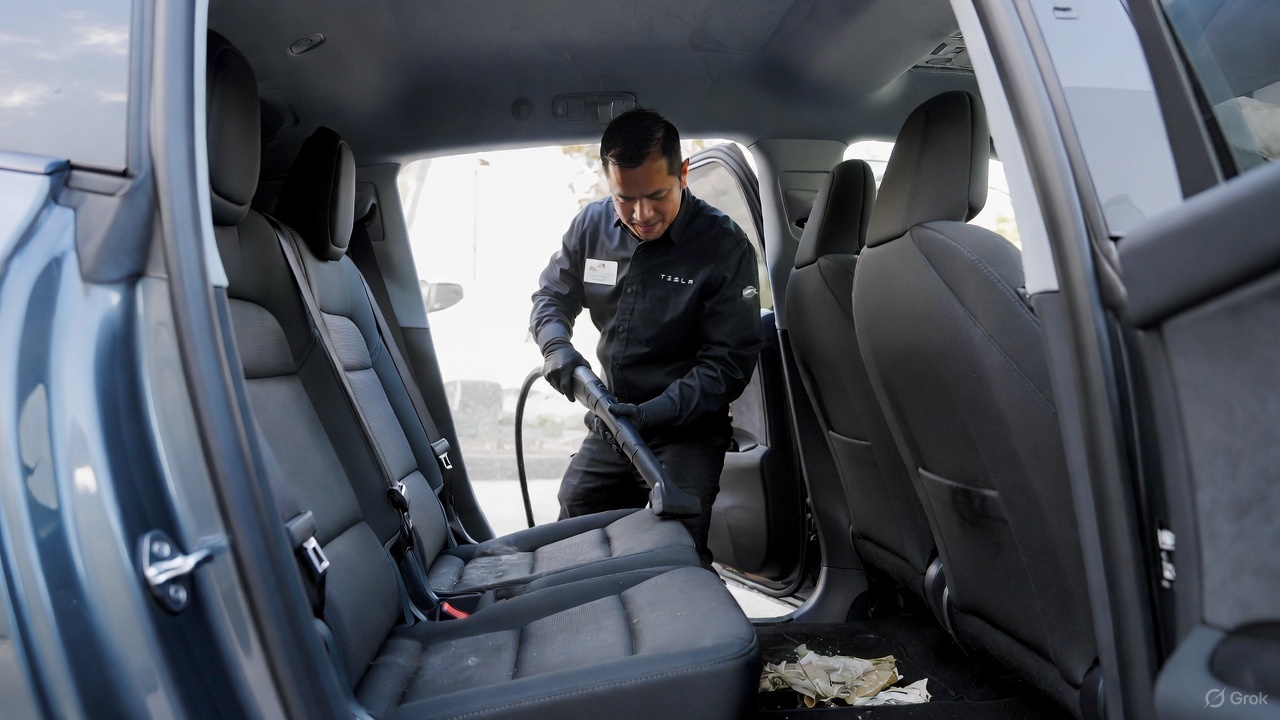
Tesla has added a new and somewhat surprising fee to the Robotaxi program. It’s only surprising because it was never there before.
Tesla shocked everyone when it launched its Robotaxi platform and offered riders the opportunity to tip, only to tell them they do not accept tips. It was one of the company’s attempts at being humorous as it rolled out its driverless platform to people in Austin.
As it has expanded to new cities and been opened to more people, as it was yesterday to iOS users, Tesla has had to tweak some of the minor details of the Robotaxi and ride-hailing platforms it operates.
First Look at Tesla’s Robotaxi App: features, design, and more
With more riders, more vehicles, and more operational jurisdictions, the company has to adjust as things become busier.
Now, it is adjusting the platform by adding “Cleaning Fees” to the Robotaxi platform, but it seems it is only charged if the vehicle requires some additional attention after your ride.
The app will communicate with the rider with the following message (via Not a Tesla App):
“Additional cleaning was required for the vehicle after your trip. A fee has been added to your final cost to cover this service. Please contact us if you have any questions.”
The cost of the cleaning will likely depend on how severe the mess is. If you spill a soda, it will likely cost less than if you lose your lunch in the back of the car because you had a few too many drinks.
This is an expected change, and it seems to be one that is needed, especially considering Tesla is operating a small-scale ride-hailing service at the current time. As it expands to more states and cities and eventually is available everywhere, there will be more situations that will arise.
The messes in vehicles are not a new situation, especially in a rideshare setting. It will be interesting to see if Tesla will enable other fees, like ones for riders who request a ride and do not show up for it.
News
Tesla Model Y sold out in China for 2025
Customers who wish to get their cars by the end of the year would likely need to get an inventory unit.
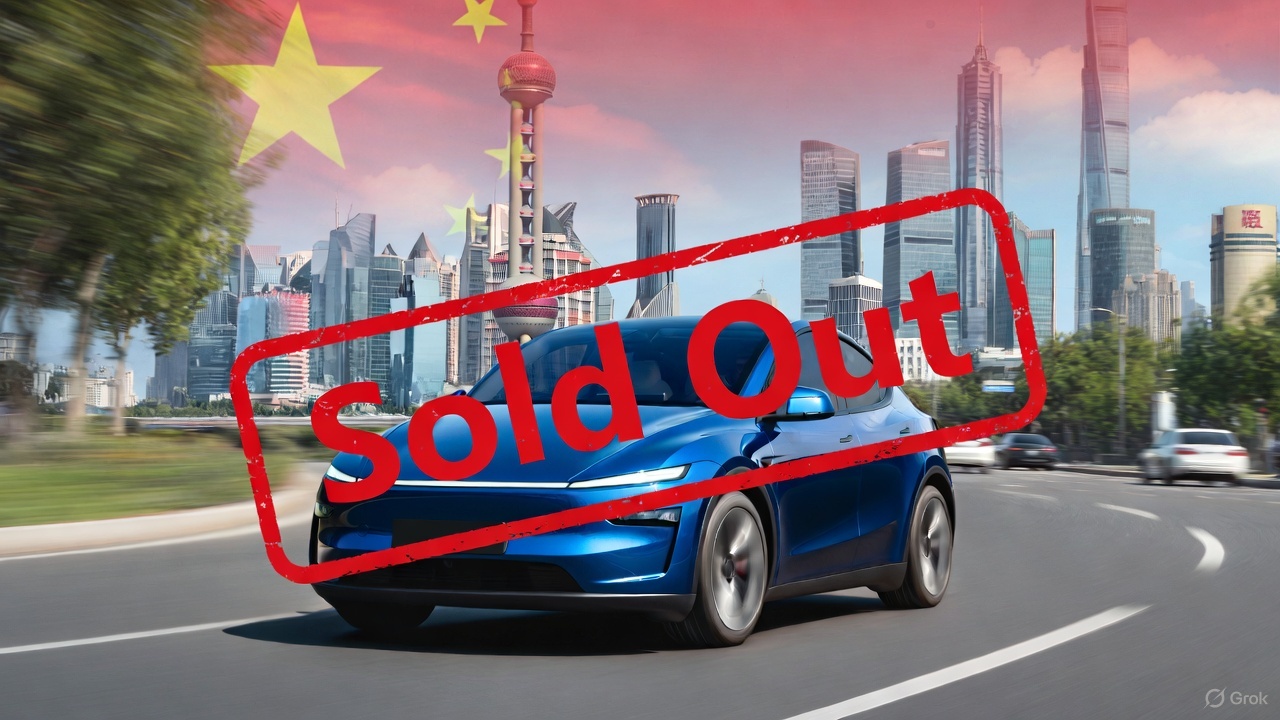
It appears that the Model Y has been sold out for 2025 in China. This seems to be true for the four variants of the vehicle that are currently offered in the country.
Tesla China’s order page update
A look at Tesla China’s order page for the Model Y shows a message informing customers that those who wish to guarantee delivery by the end of the year should purchase an inventory unit. This was despite the Model Y RWD and Model Y L showing an estimated delivery timeline of 4-8 weeks, and the Model Y Long Range RWD and Model Y Long Range AWD showing 4-13 weeks.
As per industry watchers, these updates on the Model Y’s order page suggest that Tesla China’s sales capacity for the remainder of 2025 has been sold out. The fact that estimated delivery timeframes for the Model Y Long Range RWD and AWD extend up to 13 weeks also bodes well for demand for the vehicle, especially given strong rivals like the Xiaomi YU7, which undercuts the Model Y in price.
Tesla China’s upcoming big updates
What is quite interesting is that Tesla China is still competing in the country with one hand partly tied behind its back. So far, Tesla has only been able to secure partial approval for its flagship self-driving software, FSD, in China. This has resulted in V14 not being rolled out to the country yet. Despite this, Tesla China’s “Autopilot automatic assisted driving on urban roads,” as the system is called locally, has earned positive reviews from users.
As per Elon Musk during the 2025 Annual Shareholder Meeting, however, Tesla is expecting to secure full approval for FSD in China in early 2026. “We have partial approval in China, and we hopefully will have full approval in China around February or March or so. That’s what they’ve told us,” Musk said.
News
Tesla Full Self-Driving appears to be heading to Europe soon
For years, Musk has said the process for gaining approval in Europe would take significantly more time than it does in the United States. Back in 2019, he predicted it would take six to twelve months to gain approval for Europe, but it has taken much longer.
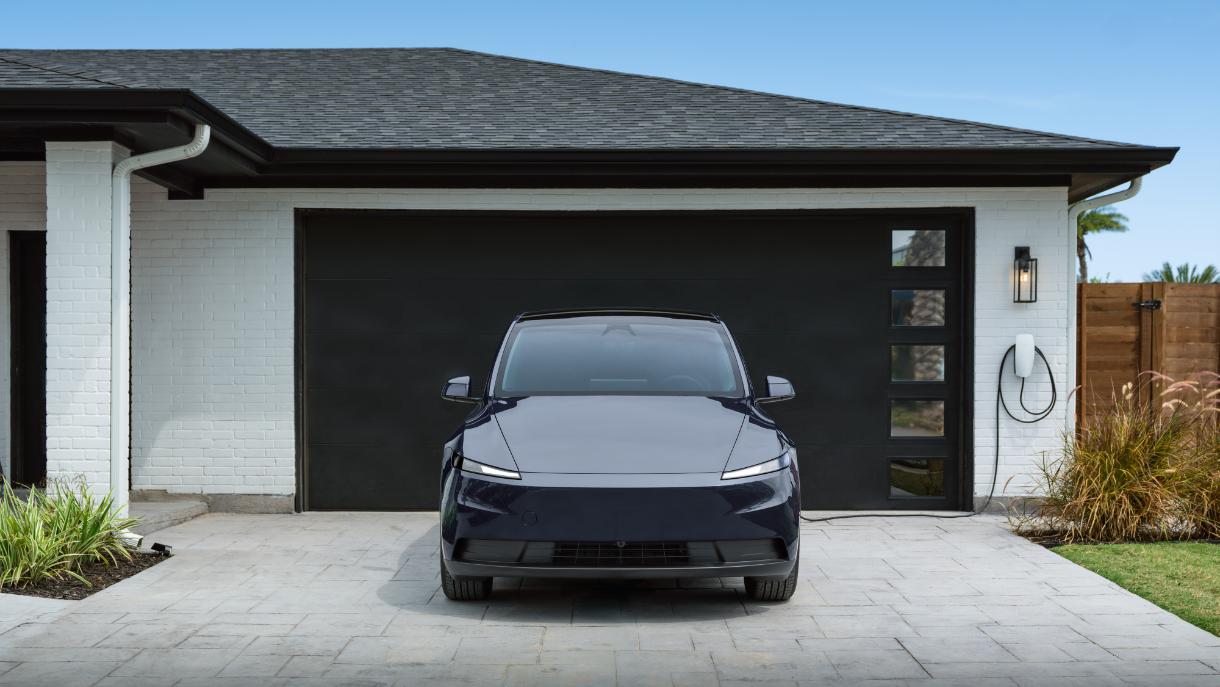
Tesla Full Self-Driving appears to be heading to Europe soon, especially as the company has continued to expand its testing phases across the continent.
It appears that the effort is getting even bigger, as the company recently posted a job for a Vehicle Operator in Prague, Czech Republic.
This would be the third country the company is seeking a Vehicle Operator in for the European market, joining Germany and Hungary, which already have job postings in Berlin, Prüm, and Budapest, respectively.
🚨Breaking: Tesla is hiring vehicle operators in Prague. pic.twitter.com/CbiJdQLCLj
— Tesla Yoda (@teslayoda) November 19, 2025
This position specifically targets the Engineering and Information Technology departments at Tesla, and not the Robotics and Artificial Intelligence job category that relates to Robotaxi job postings.
Although there has been a posting for Robotaxi Operators in the Eastern Hemisphere, more specifically, Israel, this specific posting has to do with data collection, likely to bolster the company’s position in Europe with FSD.
The job description says:
“We are seeking a highly motivated employee to strengthen our team responsible for vehicle data collection. The Driver/Vehicle Operator position is tasked with capturing high-quality data that contributes to improving our vehicles’ performance. This role requires self-initiative, flexibility, attention to detail, and the ability to work in a dynamic environment.”
It also notes the job is for a fixed term of one year.
The position requires operation of a vehicle for data collection within a defined area, and requires the Vehicle Operator to provide feedback to improve data collection processes, analyze and report collected data, and create daily driving reports.
The posting also solidifies the company’s intention to bring its Full Self-Driving platform to Europe in the coming months, something it has worked tirelessly to achieve as it spars with local regulators.
For years, Musk has said the process for gaining approval in Europe would take significantly more time than it does in the United States. Back in 2019, he predicted it would take six to twelve months to gain approval for Europe, but it has taken much longer.
This year, Musk went on to say that the process of getting FSD to move forward has been “very frustrating,” and said it “hurts the safety of the people of Europe.”
Elon Musk clarifies the holdup with Tesla Full Self-Driving launch in Europe
The latest update Musk gave us was in July, when he said that Tesla was awaiting regulatory approval.








